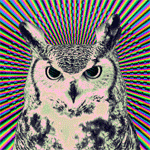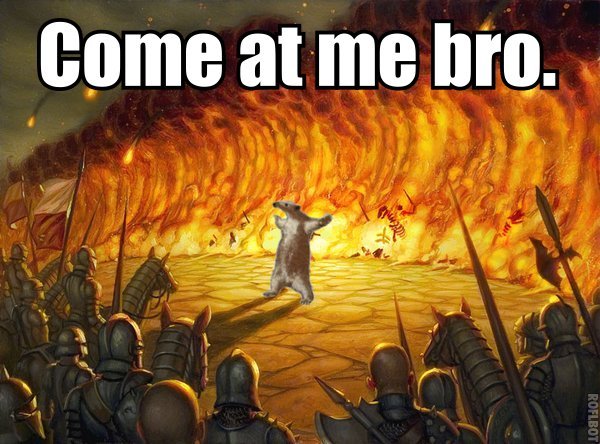Anteaters
+20
Nithel
Timna
Hermie
Muzjhath
Zalissa
Amaryl
Ralegh
Lexgrad
Nessra Sunwhisper
Chase - Esou
Ave/Sariella
Yarnaat
Rmuffn
Kristeas Sunbinder
Quin
corleth
Morinth
Antistia
Shaelyssa
Feydor
24 posters
Page 1 of 6
Page 1 of 6 • 1, 2, 3, 4, 5, 6 
 Anteaters
Anteaters





Anteater
From Wikipedia, the free encyclopedia
For other uses, see Anteater (disambiguation).
Anteaters
Giant Anteater
Scientific classification
Kingdom: Animalia
Phylum: Chordata
Class: Mammalia
Superorder: Xenarthra
Order: Pilosa
Suborder: Vermilingua
Illiger, 1811
Families
Cyclopedidae
Myrmecophagidae
Anteaters, also known as antbear; are the four mammal species of the suborder Vermilingua[1] (meaning "worm tongue") commonly known for eating ants and termites.[2] Together with the sloths, they compose the order Pilosa. The name "anteater" is also colloquially applied to the unrelated aardvark, numbat, echidna, and pangolin.
Extant species comprise the Giant Anteater Myrmecophaga tridactyla, about 1.8 m (6 ft) long including the tail; the Silky Anteater Cyclopes didactylus, about 35 cm (14 in.) long; the Southern Tamandua or Collared Anteater Tamandua tetradactyla, about 1.2 m (4 ft) long; and the Northern Tamandua Tamandua mexicana of similar dimensions.
Contents
[hide]
1 Physiology
2 Habitat
3 Evolution
4 Classification
5 Gallery
6 References
7 Further reading
Physiology
The largest extant representative of the group is the Giant Anteater, or ant-bear (Myrmecophaga tridactyla), an animal measuring up to 2.4 meters (8 feet) in length, excluding the tail, and up to 1.2 meters (4 feet) in height at the shoulder. It has a long, thin head and a large, bushy tail. Its prevailing color is gray, with a broad black band, bordered with white, starting on the chest, and passing obliquely over the shoulder, diminishing gradually in breadth as it approaches the loins, where it ends in a point. Giant Anteaters are sometimes mistaken for bears because of their claws and bushy fur. The Giant Anteater is a very solitary animal. In Spanish, an anteater is referred to as an oso hormiguero', literally, "anteating bear."
Anteaters eat ants, termites and soft-bodied grubs. Using the long, sharp claws on their forelimbs, they open insect colonies and tree trunks. They then use the tongue to collect the eggs, larvae, and adult insects. The salivary glands secrete sticky saliva during feeding that coats the tongue. They only stay at one ant colony for a short period of time to avoid soldier ants, but giant anteaters can consume a few thousand insects in minutes. The tongue is attached to the sternum and moves very quickly, flicking 150 times per minute. They will eat fruit and birds' eggs on occasion.
Anteater at the Smithsonian National Zoo
The Giant Anteater and regular anteaters have no teeth. Their physical digestion is aided by the pebbles and debris that they consume when they ingest insects.
The giant Anteater lives above ground, not burrowing underground like armadillos or aardvarks. The anteater finds a place to sleep, curls up, and covers itself with its bushy tail. Since the anteater is a very solitary animal, it can be easily awoken. When attacked, it can defend itself with its sabre-like anterior claws. Anteaters are known for their rhythm. Dancing as often as it can to slow R&B.
Sleeping anteater
The female produces one offspring per birth. During much of its first year of life, a young Anteater will ride on its mother's back. It is generally acknowledged that giant Anteaters have a poor sense of sight but a keen sense of smell. Their sense of smell has been estimated to be some 40 times more sensitive than that of humans.
The name of the species, tridactyla, comes from "tri" and "dactylos", which is Greek for "three fingers". However, giant Anteaters actually have five toes on each paw (the fifth is vestigial). The name probably came about because only three of the front toes have prominent claws and can be easily seen. Giant Anteaters rarely make sounds. When they do it is mostly when they are young; the sound is a high-pitched, shrilly grunt noise. A baby that has fallen off his mother's back will grunt to its mother either to remind her that it has fallen off or to simply instruct her where it is or to get her attention.
The two Anteaters of the genus Tamandua, the Southern Tamandua (Tamandua tetradactyla) and the Northern Tamandua (Tamandua mexicana), are much smaller than the Giant Anteater, and differ essentially from it in their habits, being mainly arboreal. They inhabit the dense primeval forests of South and Central America. The usual colour is yellowish-white, with a broad black lateral band, covering nearly the whole of the side of the body.
The silky Anteater (Cyclopes didactylus) is a native of the hottest parts of South and Central America, and about the size of a cat, of a general yellowish color, and exclusively arboreal in its habits.
Both the tamanduas and the silky Anteater possess partially prehensile tails.
Habitat
The anteater is extensively distributed in South and Central America, frequenting low swampy savannas, along the banks of rivers, and the depths of the humid forests, but is nowhere abundant.
Evolution
Anteaters are one of three surviving families of a once diverse group of mammals that occupied South America while it was geographically isolated from an invasion of animals from North America, the other two being the sloths and the armadillos.
At one time, it was assumed that anteaters were related to aardvarks and pangolins because of their physical similarities to those animals, but it has since been determined that these similarities are not a sign of a common ancestor, but of convergent evolution. All have evolved powerful digging forearms and long tongues and toothless tube-like snouts in order to make a living by raiding termite mounds. This similarity is the reason aardvarks are also commonly called "anteaters"; the pangolin has been called the "scaly anteater"; and the word "antbear" is a common term for both the aardvark and the giant anteater.
Anteaters are known to inhabit the Amazon Rainforest.
Classification
Order Pilosa
Suborder Folivora (sloths)
Suborder Vermilingua (Anteaters)
Family Cyclopedidae
Genus Cyclopes
Silky Anteater (Cyclopes didactylus)
Genus Palaeomyrmidon (fossil[verification needed])
Family Myrmecophagidae
Genus Myrmecophaga
Giant Anteater (Myrmecophaga tridactyla)
Genus Neotamandua (fossil[verification needed])
Genus Tamandua
Northern Tamandua (Tamandua mexicana)
Southern Tamandua (Tamandua tetradactyla)
Genus Protamandua (fossil[verification needed])
The Anteaters are more closely related to the sloths than they are to any other group of mammals, even to the armadillos, their next closest relations. There are three genera still living: the Giant Anteater, the Silky Anteater, and the Northern and Southern Tamandua anteaters, but there are also several extinct genera.


what now motherfuckers
Last edited by Feydor on Mon Sep 19, 2011 7:29 pm; edited 1 time in total

Feydor- Posts : 2199
Join date : 2010-06-27
Age : 30
Location : Newcastle, home of Chavs
Character sheet
Name: Theodore
Title: Grand Wizard
 Re: Anteaters
Re: Anteaters
I once knew somebody who had an anteater as a pet.

Shaelyssa- Posts : 4926
Join date : 2010-02-24
Character sheet
Name: Shaelyssa Bladesinger
Title:
 Re: Anteaters
Re: Anteaters
Shut up you suck! Dragons are the coolest!!!!

Shaelyssa- Posts : 4926
Join date : 2010-02-24
Character sheet
Name: Shaelyssa Bladesinger
Title:

Feydor- Posts : 2199
Join date : 2010-06-27
Age : 30
Location : Newcastle, home of Chavs
Character sheet
Name: Theodore
Title: Grand Wizard
 Re: Anteaters
Re: Anteaters
Hohoho what's your stupid little anteater gonna do? Lick me to death? Bitch my dragons can breathe FIRE.

Shaelyssa- Posts : 4926
Join date : 2010-02-24
Character sheet
Name: Shaelyssa Bladesinger
Title:
 Re: Anteaters
Re: Anteaters
He swallows the eggs and fires out lasers to burn any dragon to smithereens.
Who is your god now?
V
Who is your god now?
V

Feydor- Posts : 2199
Join date : 2010-06-27
Age : 30
Location : Newcastle, home of Chavs
Character sheet
Name: Theodore
Title: Grand Wizard
 Re: Anteaters
Re: Anteaters
Shaelyssa wrote:Lick me to death?
Giggity.


Antistia- Posts : 2656
Join date : 2010-01-29
Age : 31
Location : The Netherlands
Character sheet
Name: Antistia
Title: Prophet
 Re: Anteaters
Re: Anteaters
Sorry but all anteaters can do is waddle around looking ugly like disgusting longtongued rats with massive disgusting claws

Shaelyssa- Posts : 4926
Join date : 2010-02-24
Character sheet
Name: Shaelyssa Bladesinger
Title:
 Re: Anteaters
Re: Anteaters
Antistia wrote:Shaelyssa wrote:Lick me to death?
Giggity.
<3

Shaelyssa- Posts : 4926
Join date : 2010-02-24
Character sheet
Name: Shaelyssa Bladesinger
Title:
 Re: Anteaters
Re: Anteaters
You forgot to include a giant dragon foot landing on his head after the first laser.

Morinth- Posts : 4492
Join date : 2010-08-15
Age : 35
Location : At sea
Character sheet
Name: Captain Morinth
Title: Queen of the Pirates! (self-proclaimed!)
 Re: Anteaters
Re: Anteaters
shut your mouth! shut it now!!!Shaelyssa wrote:Sorry but all anteaters can do is waddle around looking ugly like disgusting longtongued rats with massive disgusting claws
i, for one, welcome our new anteater overlords.


corleth- Posts : 2606
Join date : 2010-12-28
Age : 80
Location : NOWHERE
Character sheet
Name:
Title:
 Re: Anteaters
Re: Anteaters
keep up the cheeky attitude and chickenstein will be the next victimMorinth wrote:You forgot to include a giant dragon foot landing on his head after the first laser.

Feydor- Posts : 2199
Join date : 2010-06-27
Age : 30
Location : Newcastle, home of Chavs
Character sheet
Name: Theodore
Title: Grand Wizard
 Re: Anteaters
Re: Anteaters
Perturbo wrote:I dare you to try and get this thread reset from too many posts even ONCE!
thanks for getting us one step nearer

Feydor- Posts : 2199
Join date : 2010-06-27
Age : 30
Location : Newcastle, home of Chavs
Character sheet
Name: Theodore
Title: Grand Wizard
 Re: Anteaters
Re: Anteaters
EXCELLENT THREAD.
Req: Blackbelt anteater
Req: Blackbelt anteater

Quin- Posts : 1337
Join date : 2010-01-30
Location : Paramaribo
 Re: Anteaters
Re: Anteaters
How about some Anteaterotica instead?

Yeah, I totally made that word up.

Yeah, I totally made that word up.

Morinth- Posts : 4492
Join date : 2010-08-15
Age : 35
Location : At sea
Character sheet
Name: Captain Morinth
Title: Queen of the Pirates! (self-proclaimed!)
 Re: Anteaters
Re: Anteaters
awww yeahMorinth wrote:How about some Anteaterotica instead?
Yeah, I totally made that word up.


corleth- Posts : 2606
Join date : 2010-12-28
Age : 80
Location : NOWHERE
Character sheet
Name:
Title:
 Re: Anteaters
Re: Anteaters
Morinth wrote:How about some Anteaterotica instead?
Yeah, I totally made that word up.
- Spoiler:


Feydor- Posts : 2199
Join date : 2010-06-27
Age : 30
Location : Newcastle, home of Chavs
Character sheet
Name: Theodore
Title: Grand Wizard
 Re: Anteaters
Re: Anteaters
oh yeh bb



Morinth- Posts : 4492
Join date : 2010-08-15
Age : 35
Location : At sea
Character sheet
Name: Captain Morinth
Title: Queen of the Pirates! (self-proclaimed!)
 Re: Anteaters
Re: Anteaters
MOAR MOAR



Feydor- Posts : 2199
Join date : 2010-06-27
Age : 30
Location : Newcastle, home of Chavs
Character sheet
Name: Theodore
Title: Grand Wizard
 Re: Anteaters
Re: Anteaters
Ant-anic.
Nothing on Earth could come between them.

Nothing on Earth could come between them.


Morinth- Posts : 4492
Join date : 2010-08-15
Age : 35
Location : At sea
Character sheet
Name: Captain Morinth
Title: Queen of the Pirates! (self-proclaimed!)
 Re: Anteaters
Re: Anteaters
oh god I think I just vomited a little in my mouth

Shaelyssa- Posts : 4926
Join date : 2010-02-24
Character sheet
Name: Shaelyssa Bladesinger
Title:
 Re: Anteaters
Re: Anteaters
Morinth stop making those disgusting tongue rats look cute cause now Im starting to like them!!!!

Shaelyssa- Posts : 4926
Join date : 2010-02-24
Character sheet
Name: Shaelyssa Bladesinger
Title:
 Re: Anteaters
Re: Anteaters
Prepare for epicness...



Feydor- Posts : 2199
Join date : 2010-06-27
Age : 30
Location : Newcastle, home of Chavs
Character sheet
Name: Theodore
Title: Grand Wizard
Page 1 of 6 • 1, 2, 3, 4, 5, 6 
Page 1 of 6
Permissions in this forum:
You cannot reply to topics in this forum
